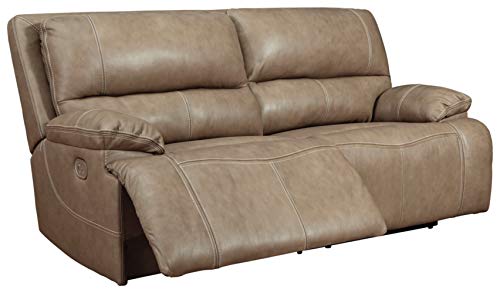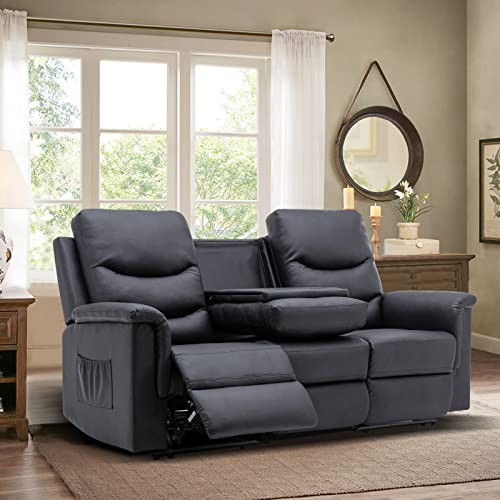20 Trailblazers Setting The Standard In Genuine Leather Sofa
페이지 정보

본문
 How to Spot a Genuine Leather Sofa
How to Spot a Genuine Leather SofaThis sofa is a great addition to any room. The leather upholstery is buttery soft. Customers love its simple style and its high-end genuine leather upholstery.
 But recognizing real leather from fake leather can be difficult to the untrained eye. Here are six ways to help you distinguish between the two: 1. Rough edges.
But recognizing real leather from fake leather can be difficult to the untrained eye. Here are six ways to help you distinguish between the two: 1. Rough edges.1. Look at the label
Genuine leather has a distinctive appearance and feel that's difficult to duplicate. It is also durable, easy to clean and doesn't absorb excess body oils. This makes it a great choice for those suffering from allergies. Not all leather sofas are made equally. In fact, some stores have even been known to disguise PVC as genuine leather.
Understanding the different types leather can help you avoid being scammed. This includes determining top-grain and full grain leather, as well as assessing the quality of the upholstery. Retailers with discerning eyes will be more than pleased to provide this information So don't hesitate ask!
The first step to identify a genuine leather sofa is to check the label. It should clearly indicate what type of leather the sofa is upholstered with, along with any other material such as cotton or fabric. Additionally, reliable sellers must have clear policies for return or exchange in case you're dissatisfied with your purchase.
If the sofa does not have a label, you can still confirm its authenticity by looking at the fabric backing of the sofa or opening the cushion casing. You can also check the texture of the leather and determine whether it has any flaws or bumps as these are telltale signs that you're dealing with fake or bonded leather.
You can also test the integrity of the sofa by rubbing its surface. Genuine leather has a smooth, soft texture. The faux leather couch leather, also known as bonded, is coarser and feels more like suede. Additionally you will discern the difference between bumps and wrinkles of genuine leather and the patterns printed on faux leather.
A genuine leather sofa is more expensive than a faux counterpart, but it's going to last longer. It could end up becoming a family heirloom over time. You can reduce the damage caused by the sun, ozone, heat and humidity by putting your leather sofa in a cool, dark room away from heaters, fireplaces and air conditioning. Leather protection creams can be used to keep your leather sofa strong and soft.
2. Look at the back
If the label doesn't tell you what kind of leather a sofa is, it's important to get up close and intimate with it. The scent, the feel, and back will all be unmistakable indicators of authenticity.
Genuine Leather couches under $500; hop over to this site, won't feel smooth when you feel it. This is because animal hides have different l shaped leather couch pores which allow them to breathe. A product that feels completely smooth may be fake leather.
Look for bumps or uneven surfaces. Genuine curved leather sofa is made by rubbing away the rough outer layer. If the material that covers your sofa is top grain leather, there will still be some bumps.
You can also test leather by pressing your finger into it and running it over it. If it is real the leather will stretch and wrinkle a bit as human skin does. This allows the leather to breathe, and stops it from becoming dry or cracked in time.
Faux leather has a uniform pattern because it is printed, whereas genuine leather is prone to imperfections that add to the beauty and durability of the leather. This includes creases, scratches and scars. A good genuine leather sofa is soft, a little stiff when it's new, but it should not crack or dry out in time if it's regularly cleaned with a special leather protection cream.
Some furniture manufacturers combine real leather with synthetic leather in order to save money. The areas that are 'contact such as seats and armrests, as well as backs, are made of real leather, while the non-contact areas, such as outside and base arms, are upholstered using a less expensive synthetic fabric made of polyurethane or leather. This is a standard practice, and even if the sofa has an authentic leather label, you should check it carefully to see what the backing is made of, as this will be a quick indicator that it isn't true genuine leather.
Pricing and labels can point you in the right direction, but to be sure a sofa is genuine leather it's essential to get up close and close to it. Look at the back of the sofa for any signs of polyurethane, which is an indication that it's not genuine leather.
3. Look at the seat
The seat of a genuine leather sofa is another indicator of its quality. Genuine leather is distinct from faux leather, which uses a combination of materials. It has a unique texture and feels soft when touched. Look for bumps beneath the surface and a strong, natural scent. These are the characteristics that distinguish genuine leather from imitations or cheap leather.
Another sign of a bad sofa is when the leather is stitched in a continuous, large piece. This is common with faux leather. However, if it's on genuine top-grain leather and you are looking for a sofa, avoid the sofa.
The price and label may give you an idea however the only reliable method of knowing is to actually touch the furniture. Genuine leather will not be flawless and have a rough feel. It also has fat wrinkles under the surface and rough edges. Genuine leather feels supple and distinct from synthetic materials. The temperature of the furniture can be a sign of whether it is genuine.
Leather sofas are an essential part of interior design and for good reason. They're stylish, durable, and long-lasting. It's also easy to clean and resistant to spills of liquid. This makes it a great option for families with pets or children. The best part about genuine leather, however it's that it's a classic design that won't be trendy, and it's still available at a range of price points.
For a timeless leather couch that can stand the test of time, consider the Pottery Barn Turner. This two-seater may be expensive but it's constructed of top-quality leather that can last for a long time. It's an excellent choice for those who have small spaces, too, since it comes in three sizes and is small enough to fit into the majority of rooms.
This All Modern Geo Genuine Leather sofa is a great option to consider if you're looking for something more contemporary. This mid-century-modern-inspired couch features an elegant, angular style with a round pillow and an elegant frame. While the frame is constructed from plywood, composite and plastic, the sofa has genuine leather in the seating area which is a upgrade from Ikea's faux leather sofa that won CHOICE's "Shonky" award in 2015.
4. Check out the smell
Genuine leather has a distinct scent - a natural, organic skin scent that can't be replicated. If the sofa you're considering buying has a strong, artificial scent it's not authentic. This is often caused by the chemicals that were used to make leather. These chemicals can remain on the furniture even after it's been made.
A good way to test the quality of a leather sofa is to gently run your fingers along the surface. Real leather will have bumps and lumps like the skin of a human. If it feels cold and smooth it's likely fake or bonded.
Alternately, you can open up one of the cushions and inspect the backing. False and bonded hides feature a polyurethane backing to support the manufactured upholstery. Genuine leather has an untreated back, similar to coarse suede. If the couch is backed by a woven fabric, it is not genuine leather.
Peter suggests that if you are trying to determine whether a sofa is genuine, the best way is to place it against your body and then gently run your fingers along the surface. The roughness of the leather will make your fingernails slightly dull and the surface will stretch and wrinkle a bit. It should also feel soft and warm to the touch.
Reversing the sofa to its back and inspecting the upholstery will also tell you if it is genuine. Faux and bonded leather will have a plastic coating on the back of the sofa, while genuine leather will be one continuous piece of leather that covers the entire back of the sofa.
Consider how often you'll use your leather sofa and how long it will last when choosing the quality. The more you utilize a couch, the more it'll need to be taken care of. Peter suggests a regular, gentle cleaning using a leather conditioner. This will help to keep the leather's softness and keep it from drying out and becoming hard.
- 이전글The Reasons Behind Using Live Chat Apps 24.11.08
- 다음글10 Things We Hate About Car Keys Cutting Near Me 24.11.08
댓글목록
등록된 댓글이 없습니다.


